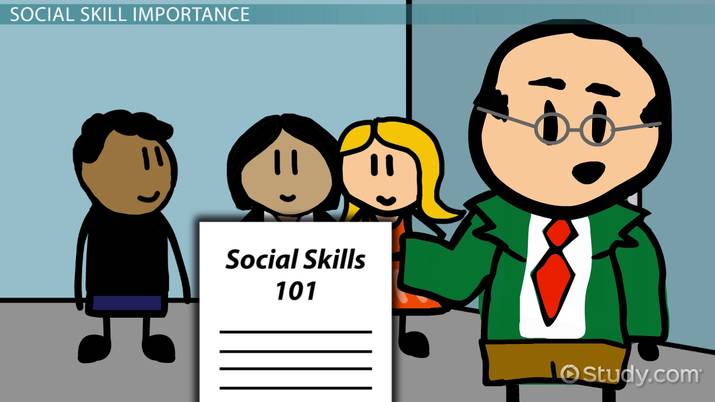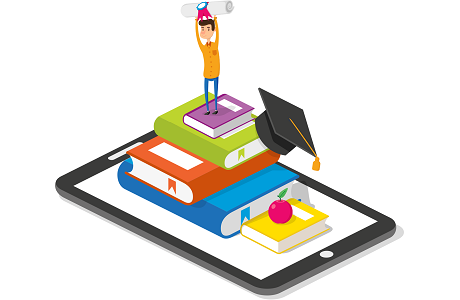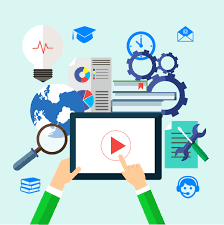First Steps in Social Emotional Learning Technology
With social-emotional learning’s (SEL) significant impact on academic, emotional, behavioral, social, and lifelong success, it is necessary to ensure its continued adoption, implementation, and effectiveness within schools. While SEL is at its highest levels of awareness and implementation, it still faces significant barriers to effectiveness. Despite every state implementing aspects of SEL and 46 states having adopted SEL-related standards, only 16% of schools use effective SEL assessments. It is difficult to accurately evaluate SEL growth and program effectiveness without well-designed valid, and reliable SEL-based assessments (e.g., diagnostic, formative, summative, progress monitoring, and standards-based). The vast majority of SEL assessment tools are not aligned with widely accepted frameworks such as the Collaborative for Academic, Social, and Emotional Learning (CASEL) 5-component model. These assessments also suffer from several other failings: (1) not aligned with SEL standards, (2) lacking multiple reporter formats, (3) missing formative information for progress monitoring, (4) unable to deliver timely results and interpretations, and (5) fail to affect SEL development that could be available with digit assessment and intervention tools. This research found that only three tools met a majority of these criteria, none meeting all criteria. To further the development and implementation of SEL assessment instruments, the Social-Emotional Learning Digital Diagnostic Assessment (SELDDA) tool was studied to determine its impact on educator social-emotional learning development. Through quantitative analysis of reliability, validity, and usability, this study evaluated the SELDDA assessment.
Role of Motivation and EdTech Journal of Selangor
Today, technology is influencing the education sector all around the world in extraordinarymanners. Technology can help students in increasing their engagement and allow them to learn and retain moreinformation. At the same time,educational technology (EdTech) can also workas the main force to enhance themotivation of students to perform better. The factors related to EdTech, like user-friendliness, psychologicalsatisfaction, and curiosity of users for new learning tools,contribute efficiently to enhancing the motivation ofstudents in the long run.This study investigates the positive role of EdTech on student learning and explores theways technology can be used to enhance the motivation of learners. Useful recommendations have been offeredthat will help future researchers and EdTech developers to work on tools andapplications that will playimportant roles in enhancing the learners’motivation. In addition, it will analyse how enhanced motivation willhave positive impacts to ensure the success oflearners in their academic and professional life in future.In theposts COVID-19 pandemic situation, technologywillplay a more important role to increase the motivation levelof the students so that they can excel in their life.
The Transition from Extrinsic Rewards Toward Intrinsic Motivation
More now than any other time in modern history, technology is influencing the education sector all around the globe in unprecedented ways. Technology can have significant impact on students in enhancing their engagement and enabling them to learn and retain more information. Educational technology (EdTech) can also work as the prime force to enhance students’ motivation to perform better. Different factors relevant to educational technology, like user-friendliness, users’ curiosity for new learning tools, and psychological satisfaction contribute effectively to enhancing students’ intrinsic motivation in the long run rather than increasing extrinsic rewards, which are effective for short-term basis. This study investigates the positive role of EdTech on student learning and explores the ways technology can be used to enhance the motivation of learners. This paper also provides an in-depth analysis on how EdTech can successfully help make the transition of students’ drive from the receipt of extrinsic rewards to that of intrinsic motivation, and how that transition can influence students to strive harder and achieve their targets. Useful recommendations have been offered that will help future researchers and EdTech developers to work on tools and applications that will play important roles in enhancing the intrinsic motivation of the learners.
Keywords: Education Technology (EdTech); Motivation; Technology; Extrinsic Rewards; Intrinsic Motivation.
The Negative Impacts of EdTech: EQ Perspectives
Digital technology has proven to be transformative for 21st century education, functioning as a catalyst for pedagogical engagement and change. Today’s learners are using smart-phones, tablets, laptops, and other digital devices as learning tools on a regular basis. Without the use of technology, teachers also struggle to offer the variety of deeper learning opportunities now available in better-equipped classrooms. Nevertheless, the negative impacts of technology, particularly relating to emotional intelligence (EQ) skills, are also raising concerns among educators and researchers in this domain. EdTech may result in loss of communication among peers as well as extra stress, which may create a barrier in developing emotional intelligence. Technology can also result in diminishing motivation and empathy between students. Despite concern over the negative effects of EdTech in learning EQ skills, previous researchers in this field have not extensively investigated this issue. This study will focus on how technology can play an important and beneficial role in learning emotional intelligence skills. The outcomes of the study will comprehensively highlight the negative impacts of using technology in the EQ learning process. The study will also make recommendations to minimize the negative impacts of EdTech in EQ learning and to make the use of technology in EQ learning more effective.
How the Use of iPad and Smartphones Creates Social Isolation
Technology has started to transform our everyday lives, and different smartphones and tablets are increasingly being popular all over the world. However, the negative impacts of using these gadgets are also becoming evident, and researchers have started to focus on these issues. One of the major impacts of gadget addiction is social isolation. Excessive use of smartphones and iPad makes people feel lonely and depressed, and as a result, social isolation is increasing at an alarming rate. Despite the damaging impacts of iPad and smartphone addiction, very few research works have been done so far that have extensively covered these vital issues. It is expected that this research will be successful in bringing new dimensions on how iPad and smartphones create social isolation. At the same time, necessary recommendations will be provided regarding the effective ways of minimizing these negative impacts of using iPad and smartphones so that people can have clear ideas about avoiding social isolation and loneliness while using these useful gadgets.
Faculty Resistance to Technology Integration
The following proposal is a response to the problem of faculty resistance that exists in many higher education institutions. There are many reasons for resistance and although the importance of technology integration is understood by educators, barriers and resistance to technology threaten effective and innovative implementation. Institutions of higher education are transitioning to meet the needs of the changing student population and as a result, increasing investments in distance and online education requires faculty to progressively utilize technology to support teaching and learning. This proposal discusses the barriers and resistance factors of technology integration in higher education, in addition to providing best practice solutions for integrating technology tools to better support pedagogical practices. This proposal specifically identifies the institutional-related barriers of institutional culture, faculty self-efficacy, and a lack of institutional support as the main causes of implementation and adoption challenges.

















